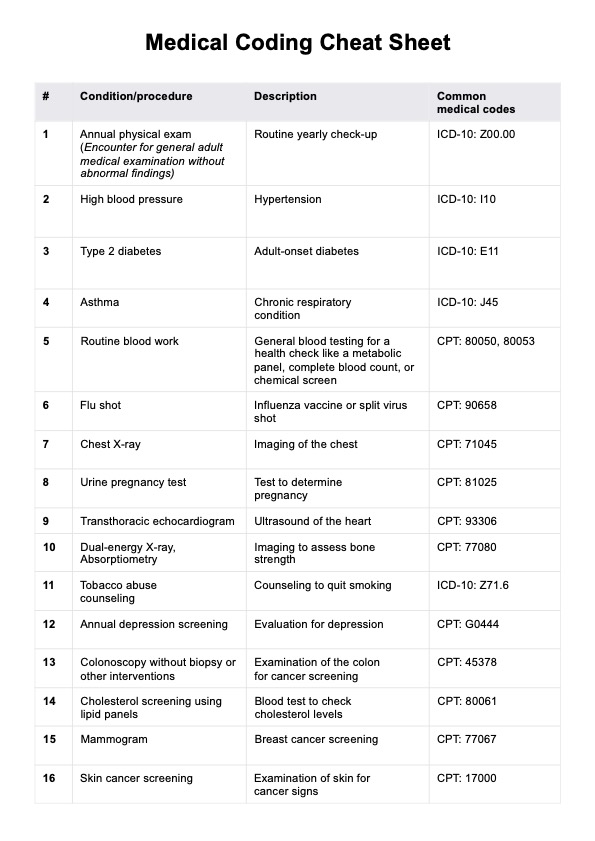A medical coding cheat sheet like Carepatron's can help improve accuracy, efficiency, and compliance in your billing process. It provides timely access to common codes, reducing the time spent looking up information. Additionally, it can help ensure consistent coding practices within a healthcare facility.

Medical Coding Cheat Sheet
Learn how medical coding works. Get a copy of a free Medical Coding Cheat Sheet PDF for your practice.
Use Template
Medical Coding Cheat Sheet Template
Commonly asked questions
For a healthcare provider, assigning the code "I10" to a patient diagnosed with hypertension is an example of medical coding based on the international classification.
While knowing common codes is helpful as a part of coding knowledge, medical coders or coding specialists primarily rely on reference materials like codebooks and software. Carepatron's cheat sheet can also be a valuable tool for a quick reference for better billing practices.
EHR and practice management software
Get started for free
*No credit card required
Free
$0/usd
Unlimited clients
Telehealth
1GB of storage
Client portal text
Automated billing and online payments











